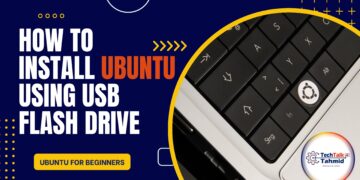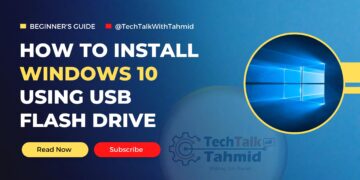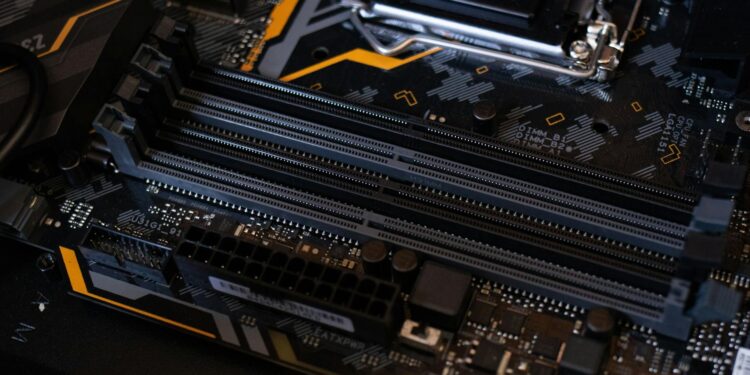The digital landscape is rapidly evolving, and for tech enthusiasts in Bangladesh, the desire for hands-on experience often bumps against the cost of dedicated hardware or cloud services. Imagine having your own personal data center, a versatile playground for learning, developing, and hosting, all without breaking the bank. A DIY home server offers precisely this opportunity: a budget-friendly lab that empowers you to explore networking, virtualization, media streaming, and data storage on your own terms. This article delves into how Bangladeshi tech enthusiasts can build a powerful, yet affordable, home server, exploring component selection, software choices, and local sourcing strategies to maximize value and unlock a world of possibilities for experimentation and skill development right from your home.
The case for a DIY home server in Bangladesh
In a country where internet bandwidth costs and data transfer limitations can sometimes be a concern, hosting your own services locally provides significant advantages. A DIY home server isn’t just a hobby; it’s a practical investment in your digital autonomy and technical skills. Beyond saving money on recurring cloud subscriptions, running your own server offers invaluable learning experiences in system administration, network configuration, and data management. It’s a true sandbox where you can experiment with different operating systems, containerization technologies like Docker, and various server applications without the risk of impacting critical production environments. For aspiring IT professionals, a home server serves as a crucial lab for certifications and real-world problem-solving. Furthermore, it provides the peace of mind of having your data physically within your control, ideal for personal backups, private cloud storage, or streaming your own media collection without relying on external services.
Budget-friendly component selection for your lab
Building a home server on a budget requires smart choices, often leveraging the availability of affordable used or refurbished components in the Bangladeshi market. The key is to balance performance with power efficiency and cost. For the central processing unit (CPU), consider older generation Intel Core i3 or i5 processors, or AMD’s Ryzen APUs, which offer decent processing power and integrated graphics, reducing the need for a separate graphics card. Even low-power Intel Atom or Celeron-based systems can suffice for lighter tasks like ad-blocking or basic file sharing. Regarding memory (RAM), 8GB is a good starting point, but aiming for 16GB, especially DDR3 or DDR4, will provide more headroom for virtualization and multiple concurrent services. Storage is critical: a small solid-state drive (SSD) of 120-240GB for the operating system and frequently accessed applications ensures snappy performance, while larger, more affordable hard disk drives (HDDs) are perfect for bulk storage of media, backups, and large files. For the motherboard, look for one that supports your chosen CPU, has sufficient SATA ports for your storage needs, and features a gigabit Ethernet port for fast network transfers. The power supply unit (PSU) should be efficient and provide just enough wattage for your low-power components, as an oversized PSU will waste electricity. Finally, repurposing an old PC case is an excellent way to save money and ensure adequate ventilation.
Here’s a comparison of potential costs for new versus used components in the local market (estimates):
| Component | New (BDT) | Used/Refurbished (BDT) |
|---|---|---|
| CPU (Intel i3/Ryzen 3 equivalent) | 8,000 – 15,000 | 3,000 – 7,000 |
| RAM (8GB DDR4) | 3,500 – 6,000 | 1,500 – 3,000 |
| Motherboard | 5,000 – 10,000 | 2,000 – 5,000 |
| SSD (240GB) | 2,500 – 4,000 | 1,000 – 2,000 |
| HDD (1TB) | 4,000 – 6,000 | 1,500 – 3,000 |
| PSU (400-500W) | 2,000 – 4,000 | 800 – 1,800 |
| Total Estimated Cost | 25,000 – 45,000+ | 9,800 – 21,800+ |
Software ecosystem and popular use cases
Once your hardware is assembled, the software defines your server’s capabilities. For a budget-friendly setup, free and open-source software (FOSS) is your best friend. Linux distributions like Ubuntu Server or Debian are prime choices for their stability, low resource footprint, and vast community support. They provide a robust foundation for nearly any server task. For those interested in virtualization, Proxmox VE is an excellent, free hypervisor that allows you to run multiple virtual machines (VMs) and containers, effectively turning one physical server into many virtual ones – perfect for creating isolated development environments or testing different operating systems.
Popular use cases for your DIY home server include:
- Media Server: Stream your movie and music collection to any device in your home using applications like Plex or Jellyfin (a free and open-source alternative).
- Network Attached Storage (NAS): Centralize your files, photos, and backups. Solutions like Samba for simple file sharing or Nextcloud for a full-fledged private cloud accessible from anywhere provide excellent options.
- Ad Blocking: Install Pi-hole to block ads and trackers across your entire network, improving browsing speed and privacy.
- Home Automation Hub: Integrate smart home devices and create custom automation routines with Home Assistant.
- Web Development Lab: Host your own websites or test web applications using Apache, Nginx, MySQL/PostgreSQL, and programming languages like PHP, Python, or Node.js. This is an ideal environment for learning web development hands-on.
- Game Server: Host a private server for games like Minecraft or Terraria for you and your friends.
Optimizing your budget and local sourcing in Bangladesh
Successfully building a budget home server in Bangladesh largely depends on smart sourcing and optimizing existing resources. Your first stop should be local computer markets like IDB Bhaban in Dhaka, Elephant Road, or smaller computer shops in divisional cities. These places are treasure troves for used and refurbished components, often available at significantly lower prices than new parts. Don’t shy away from online marketplaces such as Bikroy.com or various Facebook groups dedicated to buying and selling used PC parts; just ensure you thoroughly test components before purchasing. Many enthusiasts also find success by repurposing old desktop PCs or even laptops that are no longer used for daily tasks. Laptops, in particular, can be excellent low-power servers due to their integrated components and efficient design.
Beyond component cost, consider long-term operating expenses, primarily electricity. Opt for components with low Thermal Design Power (TDP) and ensure your server has proper ventilation to keep temperatures down and maintain efficiency. Gigabit Ethernet is a must for fast local network transfers, and a reliable router is essential for managing network traffic. Finally, engage with local tech communities, whether online forums or university clubs; they can provide valuable insights into component availability, troubleshooting tips, and even offer spare parts. Implementing basic security measures like a firewall, strong passwords, and regular software updates will also protect your investment and data.
Embarking on the journey of building a DIY home server is a rewarding experience for any tech enthusiast in Bangladesh. As we’ve explored, it’s not just about saving money on cloud services; it’s about gaining invaluable hands-on experience, fostering digital independence, and creating a personalized lab environment. From carefully selecting budget-friendly used components to harnessing the power of free and open-source software like Ubuntu Server, Proxmox VE, or Plex, every step offers a unique learning opportunity. By leveraging local markets and community knowledge, you can build a robust, versatile system tailored to your specific needs, whether for media streaming, secure data backups, or a dynamic web development playground. This project empowers you to innovate, learn, and control your digital world, transforming a modest investment into an unlimited realm of technological exploration right from your home.



















